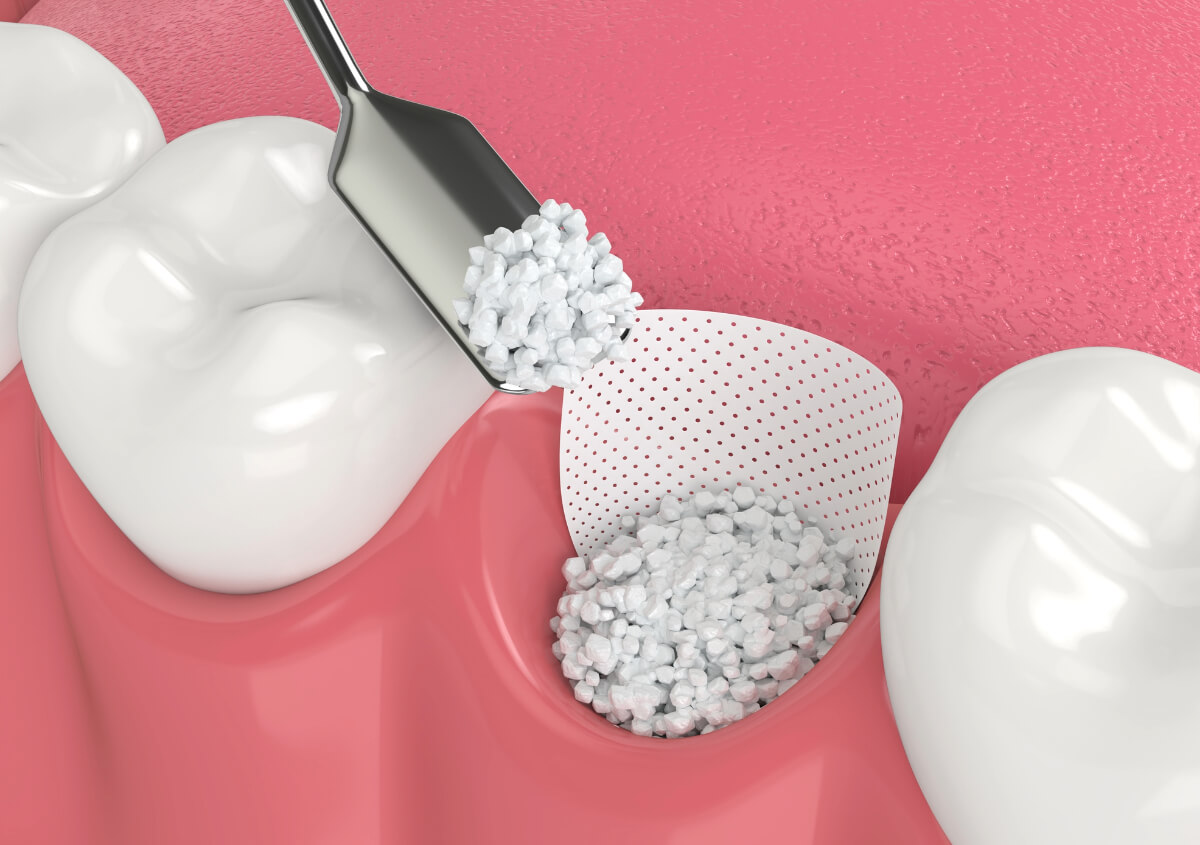ClearCare Periodontal & Implant Centre’s specialists perform bone grafting techniques to build up enough bone to support long-lasting replacement teeth
Oral health is not just about the health of the teeth and gums. These tissues depend on the bone that supports and encases them. When teeth must be extracted due to disease or decay, that bone is lost or resorbed. This process adversely affects the way you chew, speak, and it can even add years to your appearance. When bone deteriorates, overlying skin sags and fits the shrunken contours of the lower jaw. Additionally, bone resorption can present challenges to treatments to replace teeth. A bone graft procedure performed at ClearCare Periodontal & Implant Centre, halts the progression of devastating resorption and prevents complications that impact the quality of your life.
Bone loss
After a tooth is extracted, the bone surrounding it can be permanently altered. As the site heals, the bone’s original height decreases. The result is a depressed, saddle-shape to the jaw. The consequences of this process are particularly pronounced in the upper back teeth near the sinus cavity. This area is naturally more shallow than other parts of the mouth, such as the lower jaw. Just as bone loses its height, it also loses its width. In fact, some patients experience up to 50% reduction in the dimension of the bone 12 months after teeth have been extracted. These changes are collectively known as resorption of the alveolar ridge, which is the part of the jaw that holds the teeth in place. For implants to successfully “take,” they need to have sufficient alveolar bone. When strategically placed in the jaw, the implant eventually joins that surrounding bone. Once “osseointegrated” into the jaw, the implant functions like a tooth root. It holds the replacement tooth in place, providing stability just like a natural, healthy tooth is stabilized by its root.
Bone graft options
If the bone is lacking, our board-certified periodontist, Dr. Hoda Hosseini, and our experienced prosthodontist, Dr. Marshall Hoffer, may recommend bone grafting. This process takes a donor or your own bone and transfers it to the future implant site. In this manner, the bone is built up or augmented. So, it can optimally support the implant. Common donor tissue sites include the chin or jaw line. Additionally, donor bone grafts are also available from the bone bank. During your visit to our Winnipeg, MB office, we will discuss options for bone graft material, as well as the techniques that may be used to stimulate bone regrowth. We will also discuss sedation and other ways to assure the utmost comfort. Depending on your needs, grafting may occur before implant placement or during the same appointment.
Bone augmentation is a common, well-tolerated, and relatively straightforward procedure. Call (204) 421-9236 to schedule your consultation with our specialist Dr. Hoda Hosseini.







